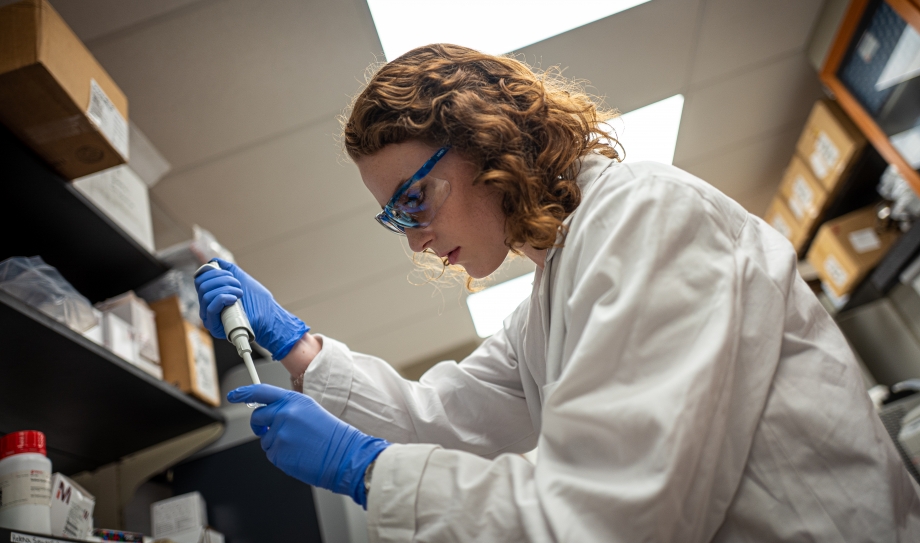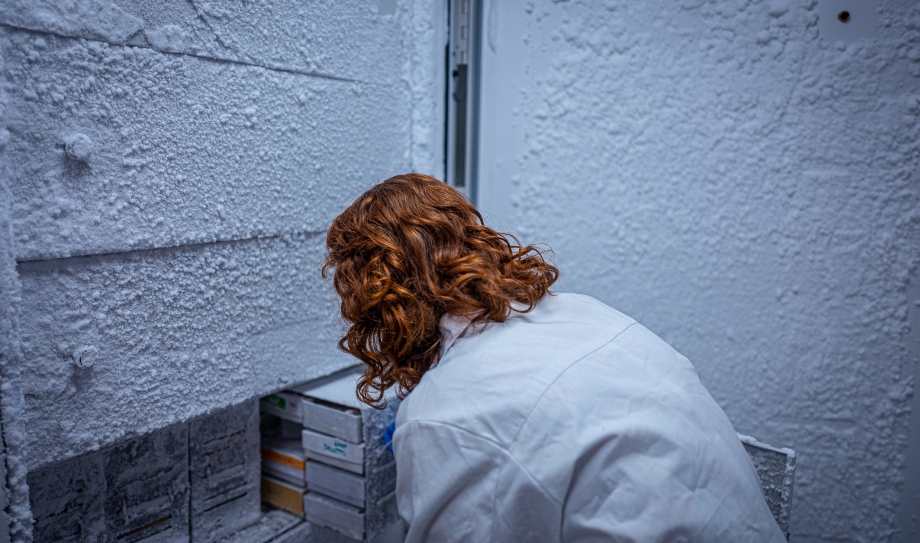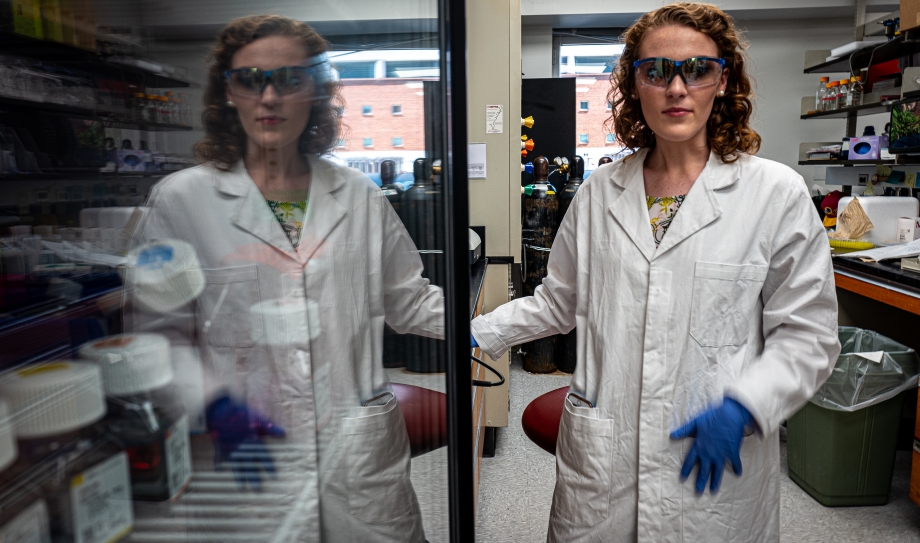
For Good: Searching for a Cure for Melanoma
Katelyn Salotto, Fourth-Year Student, Engineering Science Nanomedicine Concentration

I am developing a nano-sized vaccine that can help people who have melanoma, specifically metastatic melanoma. This could help so many people suffering from terrible side effects from their current treatments. Chemotherapeutics, for example, have high toxicities and really can degrade a patient's quality of life. Taking the approach of immunotherapy ideally provides an opportunity for the body to use its own defenses to attack the cancer and not attack the healthy tissue. The nano-sized vaccine is made up of hollow nanoparticles that I fill with small pieces of cancer-specific protein, or peptide, from melanoma cells. This nanoparticle "packaging" has very hydrophilic surface chemistry, which causes water molecules to surround it. So, to the body, the vaccine just looks like water, and this protects the peptide from getting degraded or filtered out in the kidneys. The nanoparticle is also a delivery vehicle for the peptide to immune cells in the body. This treatment is considered immunotherapy because it trains the immune system to recognize the peptide, which acts like a road sign, pointing out a cancerous cell. Thus, this nano-sized vaccine can help people with melanoma by restoring and enhancing the faculty of their immune system to identify and attack cancer.

I think my biggest motivation behind this research probably stems from my grandmother. In her 70s, she had breast cancer, and thankfully she was able to fight it and went into remission for 13 years. But then she got pancreatic cancer and did not win that fight; she lost her life to it. Fortunately for me and my family, she was at peace when it was her time to pass. Through my hospice volunteering, I've seen so many tragic situations where patients are not at peace with their deaths. Metastatic melanoma is particularly deadly and a cancer that affects many young people, which I find especially devastating. Younger people who would rather have treatment than hospice have a lot of trouble coping and finding peace at the end, which can make death really difficult not only for them, but also for their families. This motivates my research and my volunteering with the Hospice of the Piedmont in Charlottesville. I've volunteered since my second year, and currently I also go to patient homes for direct hospice services.

When my father had a stroke, I realized, ‘Oh, there is so much more to medicine than just this amazing research side of it’ that I originally believed was what captivated me. The progress of medicine being driven by research, innovation and technology, I was really focused on that. But then after his stroke, I realized there is such an important part of care and consideration for the whole being in medicine that I wanted to explore more. I thought going into a medical facility that was very different than the hospital would be a hospice. I found incredibly caring people there, and that taught me a lot about what medicine is, what good patient care is, and brought a lot of passion for why I ultimately want to go into the field of medicine.

I think engineering has a very special and unique role in medicine and in patient care, where it is a way that we can create value. Together, engineering and medicine can create value for people who are struggling in ways that are so fundamental - our own health. It's exciting that an engineer could go into the medical field and become a doctor with a different perspective and offer new solutions. I am planning to attend medical school because I want to work directly with the patients that my research aims to help. I have found I am most fulfilled working at the interface of compassionate interaction and scientific rigor, which I believe meet uniquely in medicine. I hope to use my engineering background in medicine to evaluate and communicate new medical technologies to patients, and to advocate unmet patient needs to the engineering community.